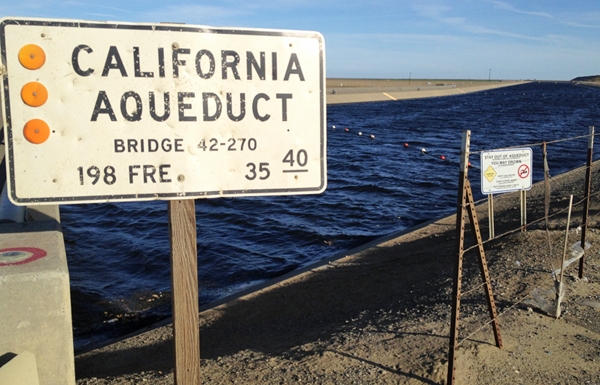
Climate variability and the mismatch between where water is and where people need it to be are two defining forces of life in California. Therefore, water storage, conveyance, and transfer are major issues in the state, and water markets have arisen as one way of facilitating the movement of water from one place to another at specific times.
In a new paper published in the journal Water, Kurt Schwabe and Mehdi Nemati of UC Riverside partnered with Clay Landry and Grant Zimmerman from WestWater Research to review water markets in Arizona, California, Texas, and throughout the western U.S. The researchers examined trends in water supply by source and demand by sector. They also studied the volume and value of water traded between 2009 and 2018.
“Water markets are intended to help reduce the impacts of water scarcity by facilitating the transfer of water to its highest-valued uses. With a changing climate, water scarcity is a growing concern, and while we can make improvements in water use efficiency, at a certain point, demand will harden. This is where markets can be helpful,” says Schwabe, professor of environmental economics and policy.
The comparison yielded interesting results. “Out of the states, California has, by far, the most water trading. That is true both in terms of volume and value,” notes Nemati, cooperative extension specialist in water resource economics and policy. “While it is only two percent of overall water use in the state, in absolute terms, it is a lot of actual water. Almost $4 billion worth of water has exchanged hands through market transactions here during the last decade,” says Nemati.
“Over the last decade, the municipal sector has been the biggest buyer, or lessee, of water, followed by agriculture, and then the environment,” says Schwabe. “On a year to year basis, however, things can shift around, and certainly did in response to the drought. For example, California's agricultural demand-side market participation has increased by six percent in value and 15 percent in volume traded over the last ten years.”
The researchers found that across states, the agricultural sector requires the highest volume of water. However, they also note that overall agricultural water use has gone down over the past two to three decades.
“Even though California has a relatively large amount of water being traded, it is still a variable market, and there is a lot of room for growth,” says Nemati. “Barriers to water markets include high transaction costs associated with multiple levels of approval, lack of transparency and information, and conveyance and infrastructure limits. There are also concerns about externalities – for example, water transferred out of a region might lead to local unemployment, which makes them politically and socially controversial.”
There are ways to address these challenges, though, Schwabe notes. “Governments can, and do, limit out-of-region transfers, ensure careful hydrological monitoring, or use a general water accounting framework, depending on the challenges of any particular place.”
The researchers say that water markets have played an essential role in water allocation throughout the western U.S. And although there are opportunities for expansion, they will necessitate attention from market developers, regulators, and other interested parties. “There's a lot of room for growth, but we will need planning, cooperation, collaboration, and evaluation by policymakers in partnership with other stakeholders to facilitate their development and implementation,” says Nemati.